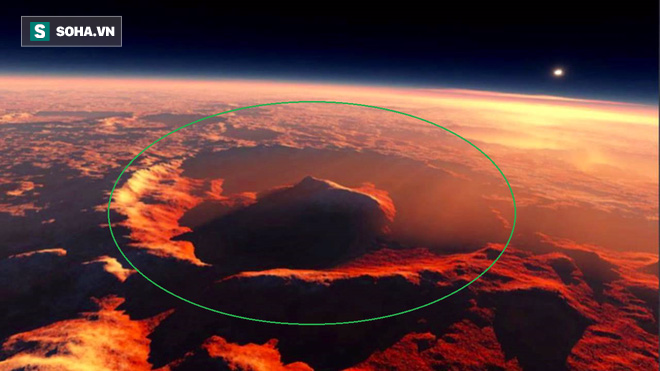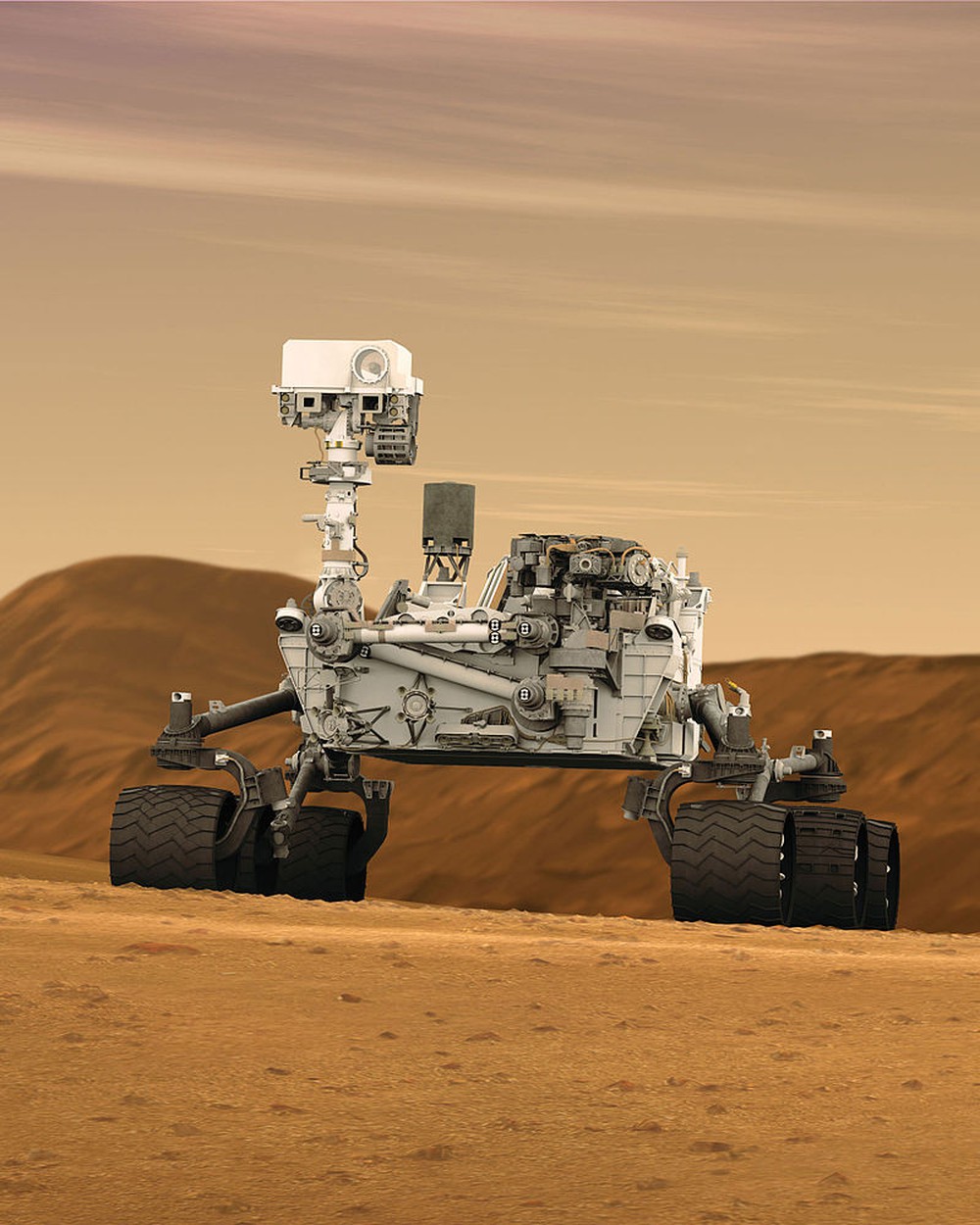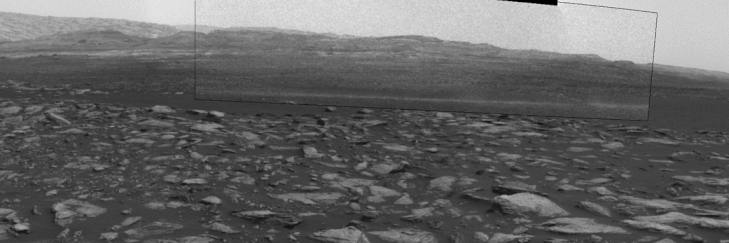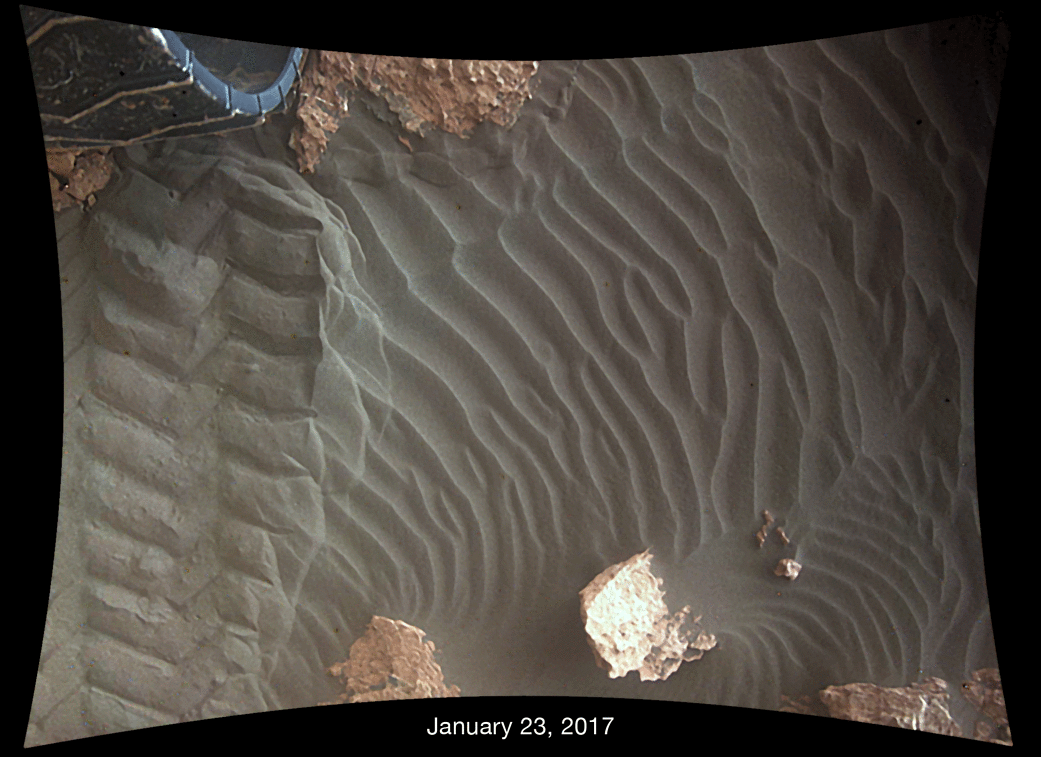The US National Aeronautics and Space Administration (NASA) said that the Mars rover Curiosity has just made an unexpected discovery on the red planet.
The fourth planet (from the Sun in the Solar System) has always been thought to be a “dead planet”, but with the unexpected discovery of the self-propelled “secret spy” robot Curiosity, space scientists may have to Review the above statement.
Based on the latest images sent by the Curiosity probe and robot to Earth, NASA scientists found that on the surface of Mars there are dust storms and high winds at the Sharp mountain slope, in the crater area. Gale Crater.

Gale Crater crater area on Mars. Photo: Internet.
Ashwin Vasavada, scientist with NASA’s Curiosity rover project, said: “After this unexpected discovery, NASA’s robot will continue to have a busy series of days studying the direction and time of movement of objects. wind along the slopes of Mount Sharp.
We want to understand how the wind on Mars affects the dunes, so that we can analyze the ancient and modern dunes on this planet.”
This finding suggests that wind probably formed and appeared on Mars billions of years ago and today winds still blow on the red planet’s surface to shape its rocky surface. Mars is a “living” planet, not the “dead” planet many people think.

NASA’s self-propelled “secret spy” robot Curiosity. Image: Wikipedia.
Currently, Curiosity is continuing to monitor the direction of the dust storm as well as observe the distance these winds travel.
Astronomers say that, among the planets in the Solar System, apart from Earth, they have found winds appearing on Neptune and Saturn.
The latest discovery of NASA’s Curiosity rover marks an important milestone in the search for signs of life on the red planet.
Previously, in September 2015, NASA announced that it had found salty water flowing on the surface of Mars in the hot season. Along with the signs of water and wind, scientists have more hope that Mars is a habitable place in the future.
Here are the animations Curiosity captured on the surface of Mars:

Tornadoes called Dust devil on Mars.

The change of large sand dunes on Mars in a day, shows that they were shaped by the winds.
Earlier, also in the search for extraterrestrial life, at a press conference in New York (USA) on February 22, 2017, NASA announced the detection of the Spitzer infrared telescope: Found the System. Sun 2.0 (with 7 planets orbiting its parent star), 40 light years from Earth, belongs to the constellation Aquarius.
Solar System 2.0 named TRAPPIST-1 is considered a promising “dock” for humanity in the journey to discover planets capable of existence and sustaining life so that in the not too distant future, humanity can can migrate there to live.
Source: SOHA (Image gif: NASA – Translated from: Dailymail)





